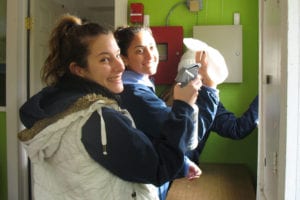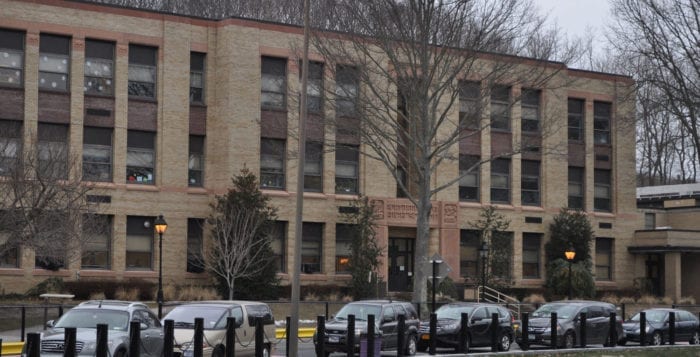By Sabrina Petroski
The “vape life” has found its way into the Port Jefferson School District, making it one of many being forced to address the new trend.
On Jan. 10, Earl L. Vandermeulen High School hosted a community forum about the dangers associated with the use of electronic cigarettes and vaping among young people. The forum, led by the Senior Drug Abuse Educator with the Suffolk County Department of Health, Stephanie Sloan, gave parents and teachers a wealth of information on the issue.
The use of e-cigarettes rose exponentially between 2011 and 2015 across the United States within both middle and high schools, according to Sloan, who cited statistics from a 2016 report on the matter by the office of the U.S. Surgeon General. Sloan said e-cigarette use increased from less than 2 percent in high schools to 15 percent, and less than 1 percent in middle schools to 5 percent over that time period. According to Sloan, more young people are using the various devices because they are curious, there are fun flavors, and there is no perception of risk.
“They are not harmless and we have to work together to encourage healthier decisions among adults and youth,” Sloan said.
Though there isn’t a lot of conclusive research on e-cigarettes yet, what we do know is the liquid, known as e-juice, is made of a combination of nicotine and propylene glycol, with traces of diacetyl, acetoin, ultrafine particles of metal, and benzene. Sloan pointed out, there is no water in the vapor being inhaled.
The devices come in different shapes and sizes; some as small as an actual cigarette, while others are the size of a cellphone. The smallest, and most popular among young adults is the size and shape of a USB drive, and it leaves no odor, making it easy to hide on school grounds.
“They are not harmless and we have to work together to encourage healthier decisions among adults and youth.”
— Stephanie Sloan
“The problem is, it is very difficult to detect,” said Christine Austen, the high school principal. “Compared to cigarettes there’s no scent, there’s no smoke, and there’s no evidence unless other students report it.”
The trend started in Port Jeff last school year but has become much more frequent since, according to leadership in the district. In an effort to stop students from picking up the habit, the school district has added a section about the dangers of e-cigarettes into the curriculum of every health class.
“We want the kids to know that there are varying amounts of nicotine and other synthetics in these vapes,” said Danielle Turner, the Director of Health, Physical Education and Athletics. “Prevention is most important because of what we still don’t know.”
Though there are age restrictions on buying e-cigarettes and vapes, the underage students are still finding ways to obtain them. According to Robert Neidig, Port Jefferson Middle School principal, students say they can access them online with gift cards or through older siblings and friends.
E-cigarettes have recently been added to the Clean Indoor Air Act, making it illegal for them to be used anywhere tobacco products are banned, including on school grounds. Sloan urged administrators to treat the devices the same as cigarettes when punishment is being decided.
According to Superintendent Paul Casciano, punishments for students caught with e-cigarettes on school property are handled on a case by case basis. A parent of both a middle school and a high school student said during the forum he believes there should be a blanket punishment.
“Just a phone call home isn’t enough,” he said. “All of the students should be treated the same in spite of other infractions. The first offense should be a warning, and the second should be a blanket punishment.”
The Port Jeff school district received a grant which will allow it to install vapor detectors in the bathrooms of the school, and going forward the district plan is for the faculty and staff to continue their efforts to keep the community aware and educated.
If you know of or suspect any stores that are selling e-cigarettes or accompanying items to people under the age of 21, you can contact the Department of Health Services Investigation Team by calling 631-853-3162. For more information on the dangers associated with e-cigarettes contact Stephanie Sloan by calling 631-853-8554, or emailing [email protected].
























